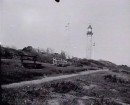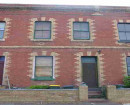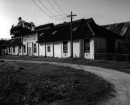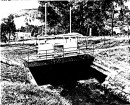Macedon Avenue of Honour
Honour Avenue,Mount Macedon, MACEDON RANGES SHIRE
-
Add to tour
You must log in to do that.
-
Share
-
Shortlist place
You must log in to do that.
- Download report
Statement of Significance
MACEDON - WOODEND ROAD WOODEND, Macedon Ranges Shire
VHR Number H2066
File Number HER/2001/000371
Municipality Macedon Ranges Shire
Extent of Registration 1. All the oak trees planted in the Avenue of Honour, Woodend within the land marked L1 on Diagram 2066 held by the Executive Director.
2. All the land marked L1 on Diagram 2066 being part of the Macedon - Woodend Road road reserve (that section known as Avenue of Honour) extending approximately 2.5km between Clarkes Lane and North Street.
3. All the following objects:75 name plaques held by the Woodend RSL.
Heritage Act Categories Heritage object/s; Heritage place
Item Categories
Item Group Item Category
Monuments and Memorials War Memorial
Parks, Gardens and Trees Tree groups - avenue of
Statement of Significance
What is significant?
The Avenue of Honour, Woodend is an extensive oak avenue of 224 trees comprising English oaks (Quercus robur), Algerian oaks (Quercus canariensis) and oak hybrids Quercus canariensis x Q. robur planted on both sides of the road along a stretch of High Street, 2.5 kilometres in length starting near Clarkes Lane and extending south to Woodend. All trees once had memorial plaques to those who served in World War I but they are now in storage in Woodend. The trees were planted by the local community with each tree planted representing an enlisted soldier from the Woodend area. The opening ceremony for the Avenue was held on 14 September 1918.
How is it significant?
The Avenue of Honour, Woodend is of historical, social and aesthetic significance to the State of Victoria.
Why is it significant?
The Avenue of Honour, Woodend is of historical significance for exemplifying rural Victoria's reaction to World War I. It is representative of plantings that first appeared in Australia during World War I commemorating all those who enlisted for service in an egalitarian form where each individual, regardless of rank, was equally recognised for their service. It is one of only a small number of avenues in Victoria to use English Oaks.
The Avenue of Honour, Woodend is of aesthetic significance as a distinctive commemorative planting and a living memorial in the town of Woodend. It is an impressive visual and cultural landmark at the northern entrance to the town and a key landscape feature of the district.
The Avenue of Honour, Woodend is of social significance for its relationship with the community as a memorial to those who served in World War I and for its continuing commemorative importance. The Avenue of Honour, Woodend remains as an indication of the involvement of Victoria's small communities in commemorating the sacrifices of their volunteers, along with the loss and sorrow experienced in small rural areas like Woodend.
HO110 Avenue of Honour, Cairns Honour Avenue, Macedon.
-
-
Macedon Avenue of Honour - Physical Description 1
Avenue. Pin Oak: Quercus palustris: 154 trees. Monument at each end.
Macedon Avenue of Honour - Historical Australian Themes
Remembering the fallen
Macedon Avenue of Honour - Usage/Former Usage
Commemoration
Veterans Description for Public
Macedon Avenue of Honour - Veterans Description for Public
The Macedon Avenue of Honour Avenue was opened on 14th September 1918. The Avenue resembles an extensive oak avenue comprising of 224 trees, including English oaks (Quercus robur), Algerian oaks (Quercus canariensis) and oak hybrids (Quercus canariensis x Q. robur). The trees were planted by the local community with each tree planted representing an enlisted soldier from the area, the name plates are now in storage in Woodend.
The Avenue is 2.5 kilometres in length stretchingalong High Street, starting near Clarke's Lane and extending south to Woodend (originally it was intended to reach Dreamthorpe, along the Mount Macedon Road). There are rubble freestone cairns at either end hold memorial plaques, the one at the east end listing those who served in the First War. As of January 2011, the Avenue was in a poor condition.
In Australia, commemorative trees have been planted in public spaces since the late nineteenth century. Arbor Days were held regularly in most Victorian State Schools during the late 1800s and early 1900s, and numerous trees were planted in parks in Melbourne and throughout Victoria to mark the visits of important and famous people.
This tradition of commemorative planting was continued in 1901 when at the end of the Boer War trees were often planted for each soldier of the district who was killed in South Africa. These plantings, however, rarely consisted of more than two or three trees in each town.
During and after the First World War avenues of honour consisting of trees lining significant streets became a popular form of commemoration. They represented a new egalitarian approach to the commemoration of soldiers where rank was not a consideration: each tree symbolises a person.
Avenues of honour are a uniquely Australian phenomenon. Australians, and in particular Victorians, embraced the idea of planting them more enthusiastically than any other country in the world. Dating from May 1916, the Eurack Avenue of Honour is the earliest known avenue of honour to be planted in Victoria.
By the time of the Second World War avenues of honour had declined in popularity as a means of commemoration. Today it is estimated that over 300 avenues of honour have been planted in Victoria to commemorate service personnel since 1901.
-
-
-
-
-
AVENUE OF HONOUR
 Victorian Heritage Register H2344
Victorian Heritage Register H2344 -
Quercus robur 'Fastigiata'
 National Trust
National Trust -
Quercus robur
 National Trust
National Trust
-
1 Brockenshire Street
 Yarra City
Yarra City -
1 Bundara Street
 Yarra City
Yarra City -
1 Forster Street
 Hobsons Bay City
Hobsons Bay City
-
-











